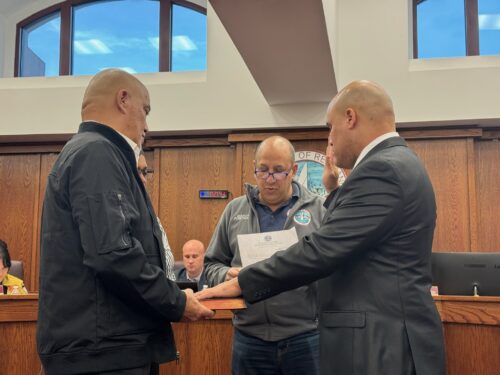
Press release from the New Jersey Pandemic Relief Fund
The New Jersey Pandemic Relief Fund announced November 20 that it will provide $187,000 to Red Bank Borough Public Schools to help students stay connected via remote learning.
Red Bank is one of nine districts across the state sharing more than $2.6 million from the NJPRF to help bridge the digital divide exacerbated by the coronavirus pandemic, which has forced many New Jersey school districts to switch to remote learning.
School districts in Newark, Paterson, Bridgeton, Freehold, Millville, Passaic, Old Bridge and Trenton are also receiving funding to purchase laptop computers, Wi-Fi hotspots and internet access needed for remote learning.
“In today’s world, having access to a computer and internet access is not a luxury, but a necessity,” said New Jersey First Lady Tammy Murphy, the founding chair of NJPRF. “We are hopeful that our commitment – alongside that of others – will address this pressing need so students can continue learning through the pandemic.”
Red Bank’s funding will allow the district to purchase 250 touch-screen Chromebooks for preschool students and 250 Chromebooks for K-8 students.
“We are grateful and at the same time ecstatic for the financial support of the New Jersey Pandemic Relief Fund in order to help bridge the digital divide for our students,” said Red Bank Borough Public Schools Superintendent Jared J. Rumage.
“Equitable access to updated technology and connectivity opens a whole new world for our students and enables them to be exposed to new opportunities and learning experiences,” Rumage said. “We have some of the most talented and resilient children in America and with this grant, we can ensure all Red Bank Borough Public School students have the capability to connect with our staff and continue to dream big.”
The decision by many districts across the state to move to remote or hybrid learning has exposed a “digital divide” between students in wealthier districts who have devices and broadband internet access and those in poorer districts who do not. Without access, students in districts that have gone remote are at a major disadvantage.
The state has provided $45 million to public school districts to buy digital devices and internet connectivity, but nearly 40,000 students across the state are still without a device or internet connectivity or both, according to the state Department of Education.
NJPRF CEO Josh Weinreich said the fund reached out to many districts to ascertain their needs and directed its donations to some of the state’s most economically disadvantaged districts, where the need far outstripped available funding.
“This is another great example of NJPRF channeling the energy and resources of New Jersey to fill in the gaps and ensure every child has the equipment and access they need so that their education is not interrupted,” Weinreich said.





















